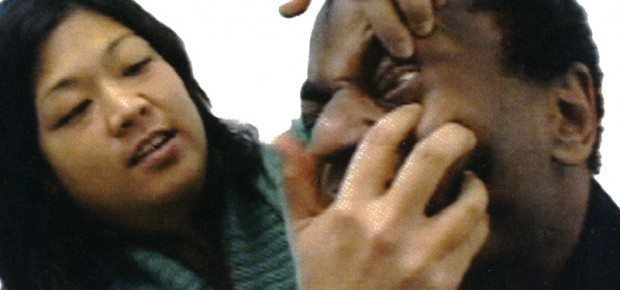Clifford Owens in Artforum 500 Words for June 2011

Clifford Owens’s upcoming exhibition at MoMA PS1 comes out of his long-standing interest in what he considers to be underacknowledged histories of performance art. Rather than reperforming works or simply exhibiting documentation, Owens will interpret and embody twenty-five scores provided by contemporary African-American artists. Public performances at the museum throughout the summer (including events on June 19, June 25, and July 29) will generate the raw material for the works on view in “Anthology,” which opens November 13.
I’VE BEEN THINKING ABOUT THIS PROJECT since my graduate studies in 1999. I was trying to research the history of African-American performance art and had a very difficult time finding material. I realized that there was no compendium of this work—it’s an underrecognized, underrepresented practice—and that I would have to create it. Initially I had thought that I would compile a book or put together an exhibition. But eventually it hit me that I didn’t want this to be an academic project; I wanted to do this project as an artist. I wanted to create the work, but at the same time, I wanted my art to be informed by and through other voices. So for this show I’ve asked an intergenerational group of African-American artists, including Ben Patterson, Dave McKenzie, and Senga Nengudi, to create a series of performance scores—descriptions of actions for me to perform.
It’s challenging because as of now, there’s no work––nothing exists––it’s all coming out of the performances we’re doing this summer. And in a sense, so much of the show will be about people’s specific experiences of the performances, which will of course be different from what one will experience in the show itself. The question also comes up about how one can organize an exhibition like this. It’s a large job for the curator, Christopher Lew, in terms of choosing what photographs, videos, audio files, and ephemera to include. It’s his first exhibition in his new role as curator at the museum, and it’s also my first solo museum show in New York. So there’s a lot of great energy going into the project. I’m optimistic.
It’s important that I am the one interpreting these scores. I’m bringing my own attitude and interests to make this a living project. Obviously, it’s a big responsibility to bring these scores to life and to present them to the public in a powerful way, because they are someone else’s intellectual labor. It’s an interesting gift economy. The artists gift these scores to me and I internalize and process them. Then I place them back in the public realm with my own energy in the work. I don’t know if all the artists will be happy with the decisions I make in terms of interpreting their scores. I think that by the end, the identity of the author of the score could be lost, which is fine. I know that whatever comes out of the original scores will by uniquely my own, unique to my own way of making art and thinking about making art.
William Pope.L’s score for me was: “Be African American. Be very African American.” For the one performance I’ve done with it, I asked two African-American boys and a young adult to repeat the Black Panther chant for children: “Black is beautiful, free Huey, said I want him free,” replacing “Huey” with “Mumia.” It’s perhaps didactic, but I thought it would be a gesture and action from the mouths of children that spoke to a past that is still present, that relates to beauty as well as representations of African Americans. I’m going to do other things with that score as well. I could shave my head—I could do anything. So far it’s my favorite. In a sense I could perform that score every day, just by waking up and walking out the door.
As told by Miriam Katz